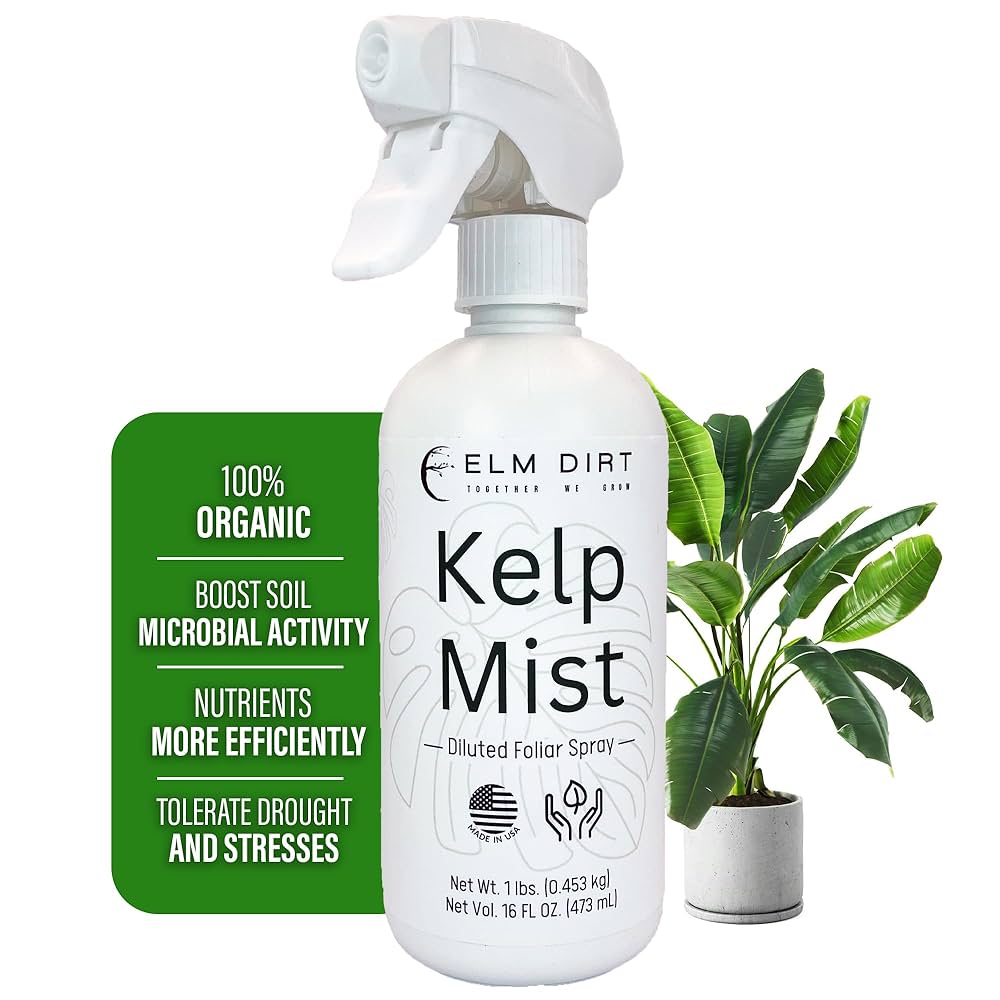Imagine transforming your garden into a thriving ecosystem, where plants flourish and your soil teems with life. Boosting soil microbial activity naturally is the secret to achieving this.
You may wonder why microbes matter. These tiny organisms are the unsung heroes of your garden, breaking down organic material, fixing nitrogen, and even helping your plants resist diseases. If you’ve ever felt frustrated by sluggish plant growth or nutrient deficiencies, enhancing these microbial allies might just be the solution you’re looking for.
This guide will reveal simple, natural methods to supercharge the microbial life in your soil, turning your garden into a lush paradise. Ready to uncover the secrets that will revolutionize your gardening experience? Let’s dive in.

Enhancing Organic Matter
Enhancing organic matter in soil is essential for boosting microbial activity. Microbes thrive when they have access to rich organic materials. These materials provide nutrients and energy for their growth. Increasing organic matter improves soil structure, fertility, and water retention. It supports a diverse and vibrant ecosystem below the surface.
Composting: Nature’s Recycling System
Composting transforms kitchen scraps into nutrient-rich soil amendments. This process is simple and effective. Add vegetable peels, fruit scraps, and coffee grounds to a compost bin. Over time, these materials break down, enriching the soil. Microbes feast on the decomposed matter, enhancing their activity.
Mulching: Protect And Nourish
Mulching covers the soil with organic materials like straw or leaves. It prevents moisture loss and regulates soil temperature. As mulch breaks down, it adds organic matter to the soil. This layer serves as food for microbes, helping them thrive. Mulching also suppresses weeds, reducing garden maintenance.
Green Manures: Plant-based Nutrients
Green manures are crops grown specifically to enrich the soil. Plant legumes or clover, then till them into the soil. As these plants decompose, they provide nutrients for microbes. This practice boosts soil fertility naturally. It also improves soil structure and reduces erosion.
Cover Crops: Year-round Soil Health
Cover crops protect and improve soil between main crop cycles. They prevent erosion and add organic matter. Choose crops like rye or oats for best results. As cover crops decompose, they feed soil microbes. This enhances microbial activity and soil health.
Organic Fertilizers: A Balanced Diet
Organic fertilizers provide nutrients without harmful chemicals. They support healthy microbial activity. Use manure, bone meal, or fish emulsion for natural nourishment. These fertilizers improve soil fertility and structure. They encourage a thriving microbial community.

Utilizing Cover Crops
Utilizing cover crops is a natural way to boost soil health. These crops enrich the soil with nutrients and enhance microbial activity. They are planted between main crops and act as a living mulch. This practice improves soil structure and prevents erosion. Cover crops also help in retaining soil moisture. They create a favorable environment for soil microorganisms.
Benefits Of Cover Crops
Cover crops add organic matter to the soil. This increases the soil’s nutrient content. They attract beneficial insects and microorganisms. These organisms break down organic matter, releasing nutrients. This process promotes a healthy soil ecosystem.
Popular Types Of Cover Crops
Legumes, such as clover and vetch, are popular cover crops. They fix nitrogen in the soil, improving fertility. Grasses like rye and oats prevent erosion. They also improve soil structure. Brassicas, such as radishes, break up compacted soil layers.
Planting And Managing Cover Crops
Choose cover crops based on your soil needs. Plant them after harvesting the main crop. Ensure they have enough time to grow before winter. Mow or till them into the soil before planting the next crop. This adds organic matter and nutrients to the soil.
Impact On Soil Microbial Activity
Cover crops provide food for soil microbes. This increases microbial diversity and activity. Healthy microbes break down organic material into nutrients. This process supports plant growth and improves soil health. Cover crops create a sustainable environment for soil life.
Incorporating Diverse Crop Rotations
Incorporating diverse crop rotations enriches soil naturally, enhancing microbial activity and promoting healthier plants. Different crops contribute unique nutrients, encouraging a balanced ecosystem underground. This practice fosters resilient soil, reducing the need for chemical fertilizers and supporting sustainable farming.
Incorporating diverse crop rotations can significantly enhance soil microbial activity. This practice involves alternating different types of crops in a specific sequence. It benefits soil health and boosts biodiversity. Diverse crop rotations improve nutrient cycling and reduce pest and disease risks. This method is essential for sustainable agriculture, promoting healthier soil ecosystems.Benefits Of Crop Rotation Diversity
Rotating crops diversely increases soil nutrients. Different plants contribute unique organic matter to the soil. This variation supports a range of microorganisms. Crop rotation also breaks pest and disease cycles. Less reliance on chemicals is needed. Diverse rotations maintain soil fertility. They prevent nutrient depletion, ensuring long-term productivity.Improving Soil Structure
Diverse crop rotations enhance soil structure. Different roots penetrate the soil in various ways. This creates channels for air and water movement. Improved soil structure aids microbial activity. It fosters a balanced ecosystem underground. Healthy soil structure supports plant growth. It reduces erosion and compaction.Promoting Biodiversity
Biodiversity thrives with diverse crop rotations. Different crops attract various beneficial organisms. These organisms support plant health and soil vitality. Increased biodiversity enhances resilience against environmental stresses. It creates a stable ecosystem for microbes. Biodiversity boosts soil functionality. It contributes to improved crop yields.Enhancing Nutrient Cycling
Crop rotations enhance nutrient cycling. Different crops use and replenish different nutrients. This natural cycle reduces the need for synthetic fertilizers. Nutrient cycling supports microbial growth. Active microbes decompose organic matter effectively. This releases nutrients back into the soil. Efficient nutrient cycling sustains plant health.Reducing Soilborne Diseases
Diverse crop rotations reduce soilborne diseases. Each crop has unique disease resistance. Rotating crops disrupts disease life cycles. This decreases pathogen populations in the soil. Reduced disease presence boosts microbial activity. Healthier soils result in better crop yields. Disease control through rotation is eco-friendly. It minimizes chemical intervention.Reducing Chemical Inputs
Enhancing soil microbial activity naturally can reduce chemical inputs. Composting and crop rotation enrich the soil, promoting beneficial microorganisms. Cover crops and organic matter addition also improve soil health, fostering a thriving ecosystem. These practices nurture soil life, leading to sustainable agriculture.
Reducing chemical inputs is a key strategy in boosting soil microbial activity naturally. Chemicals like synthetic fertilizers and pesticides often kill beneficial microorganisms that are crucial for soil health. By minimizing chemical use, you allow these tiny soil superheroes to thrive and perform their vital functions.Limit Synthetic Fertilizer Use
Start by gradually reducing the amount of synthetic fertilizers you apply to your garden or farm. These fertilizers can disrupt the natural nutrient cycles in the soil. Instead, consider using organic fertilizers like compost or well-rotted manure. They provide nutrients slowly, supporting microbial life.Choose Natural Pest Control
Chemical pesticides can wipe out beneficial insects and microorganisms. Embrace natural pest control methods like introducing predator insects or using neem oil. These options help maintain a balanced ecosystem, allowing microbes to flourish without harmful chemical residues.Embrace Crop Rotation
Rotate your crops regularly to maintain soil fertility and reduce pest buildup. Different plants have varying nutrient needs and pest resistances. This diversity supports a wide range of microorganisms. Have you tried planting legumes like beans or peas? They can fix nitrogen in the soil, naturally enriching it for the next crop.Use Cover Crops
Plant cover crops during off-seasons to protect and enrich the soil. They prevent erosion, suppress weeds, and enhance soil structure. When these crops decompose, they become organic matter, feeding the soil microbes. Have you ever noticed how lush the soil becomes after a season of cover crops?Test Your Soil Regularly
Regular soil testing helps you understand the specific needs of your soil. This knowledge allows you to apply only the necessary amendments, reducing the risk of over-fertilization. Are you familiar with soil testing kits? They are easy to use and provide valuable insights into your soil’s health. By reducing chemical inputs, you’re not just helping the environment; you’re creating a thriving habitat for essential soil microbes. What changes can you make today to foster this living community beneath your feet?
Conclusion
Boosting soil microbial activity nurtures plant health naturally. Simple actions make a big difference. Compost enriches soil, fostering life. Crop rotation prevents nutrient depletion. Reducing chemical use supports microbes. Healthy soil means healthy plants. Try integrating these practices into your garden routine.
Watch your plants thrive as the soil becomes vibrant and full of life. Implementing these strategies is easy. Anyone can start today. Enjoy the rewards of a flourishing garden. Embrace nature’s power. Cultivate a healthy ecosystem in your backyard. Your plants—and the Earth—will thank you.



